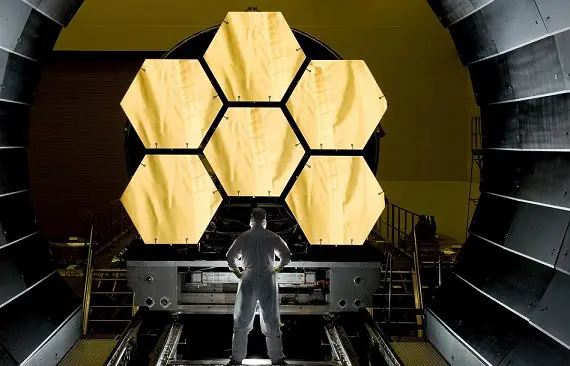In a recent interview Northrop Grumman CEO Kathy Warden described to Yahoo Finance Editor-in-Chief Andy Serwer the bright future she saw for the aerospace industry in the field of space exploration, noting, “Space is the most exciting area of our portfolio at the moment.”
The US aerospace industry was hit hard by the coronavirus pandemic, shedding 87,000 jobs as revenues dropped 2.8% to $874 billion from 2019 to 2020, according to the most recent Aerospace Industries Association Facts and Figures Report.
Although so far the post pandemic business tempo has still proved elusive, the industry is seeing sings of recovery. Revenues in 2021 were up 4% over 2020, at $712 billion, with $62 billion in operating profit – a 136% increase, according to data from PricewaterhouseCoopers.
Headquartered in Falls Church Virginia, Northrop Grumman is an aeronautics, defense, and cyberspace company which builds missiles, bomber aircrafts, and solid rocket boosters for NASA’s Space Launch program. However the company’s space division has been expanding ever since it acquired aerospace firm Orbital ATK in 2018. Space related contracts accounted for 30% of the company’s total sales in the last quarter.
Warden noted, “The expansion of opportunity in space has been significant, and I foresee that continuing into the future.”
Most notable among its accomplishments of late has been the James Webb Telescope, which was launched into space in December of 2021. The telescope uses infrared radiation to generate images of distant astronomical objects, with those infra-red photos then colorized in a post-production process. In July, during a televised broadcast, NASA released the first full-color images from the telescope, depicting a part of Carina, a constellation of stars. The pictures went viral all across social media almost immediately.
Warden said she saw a bright future, “in space exploration, like the work that we recently launched the James Webb Space Telescope. And it brought back, just fantastic images of the origins of our universe that will help to rewrite science textbooks. And help, I hope, a new generation of people to get really excited about what may be happening in space in generations to come.”
More recently, NASA released two more images just this week taken by the James Webb Telescope, this time of the Tarantula Nebula. Scientists say the photos may reveal more about just exactly how stars form.
The telescope is expected to remain in service for at least another decade, and continue to produce new images throughout that time.

